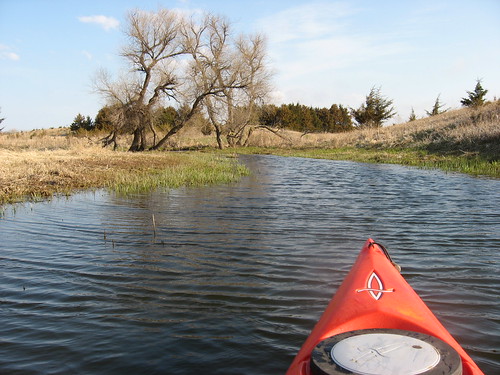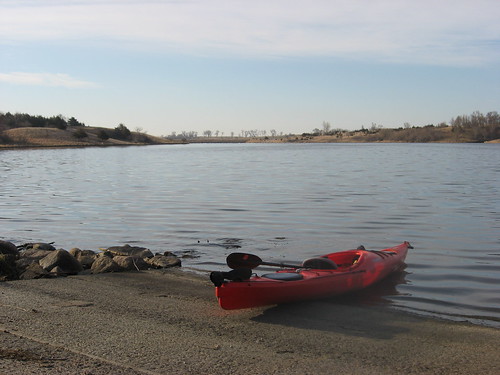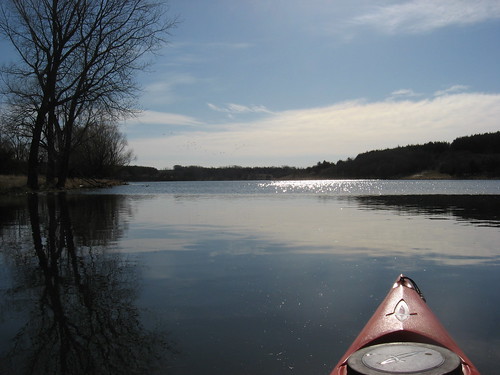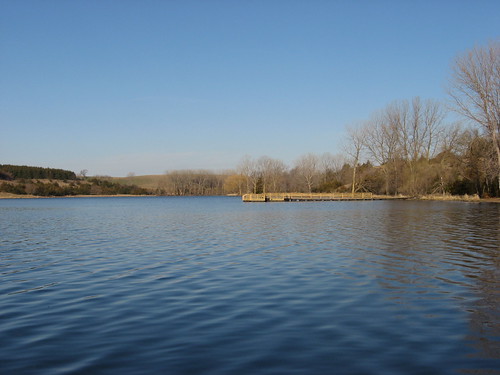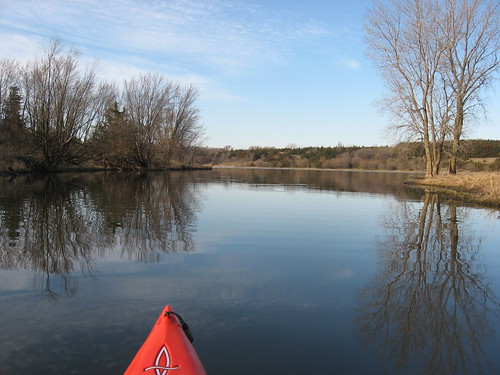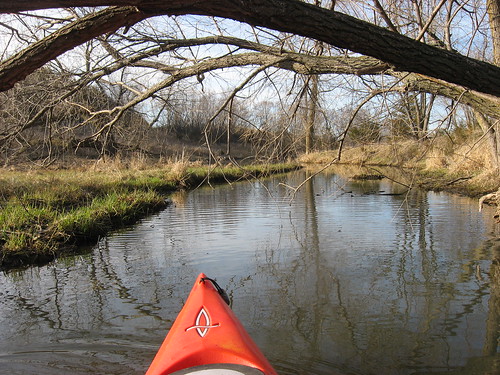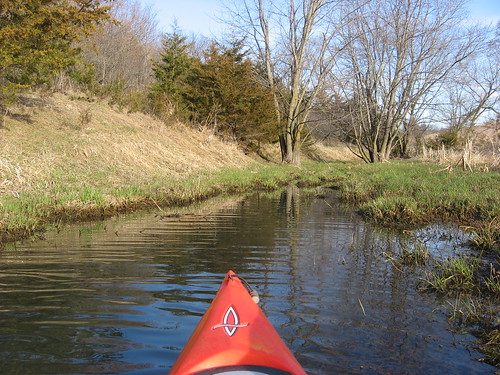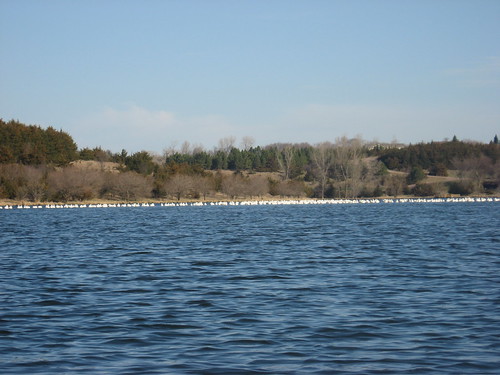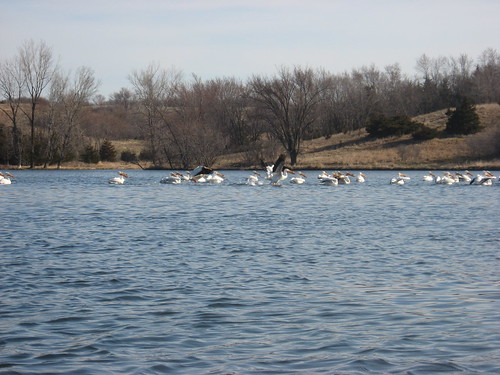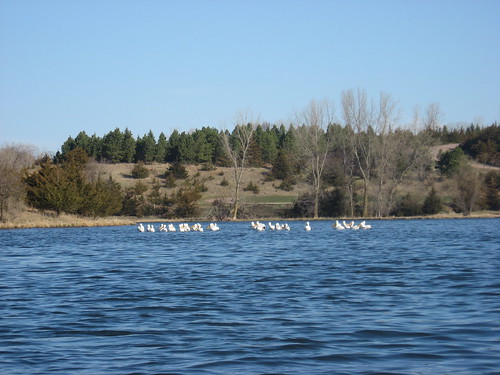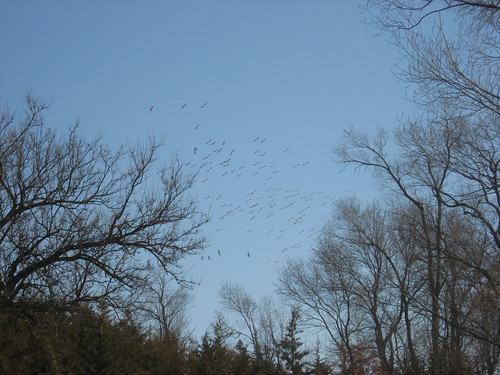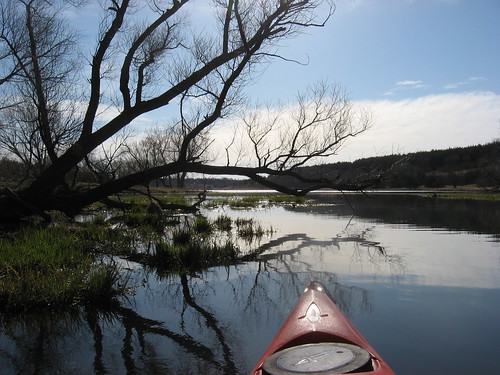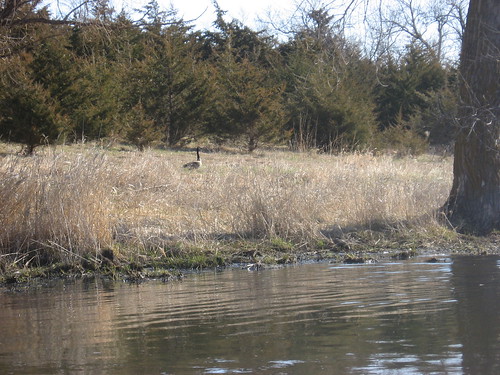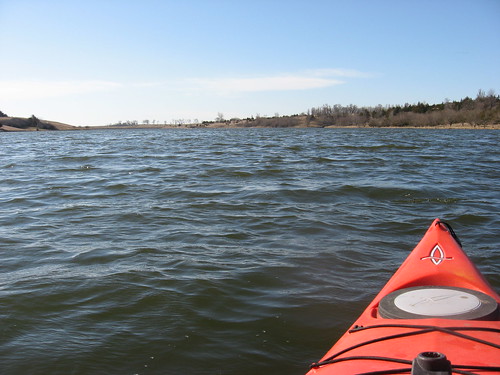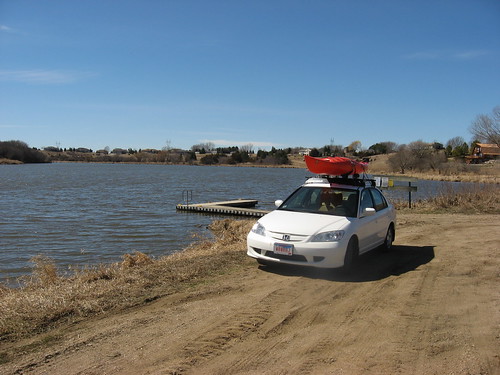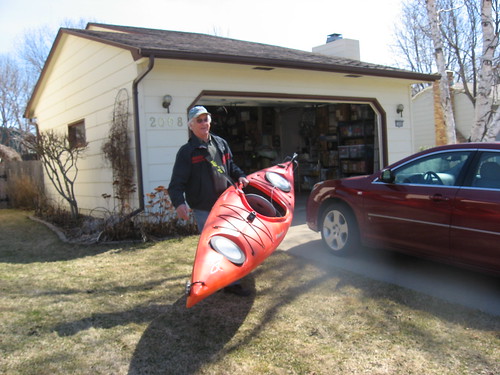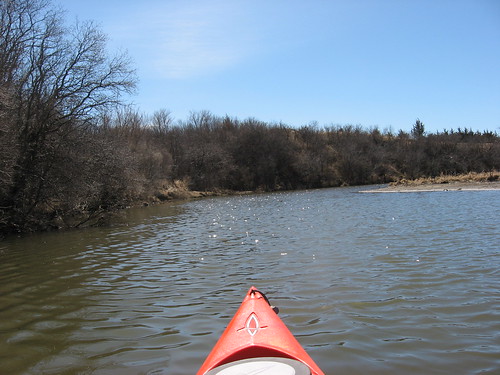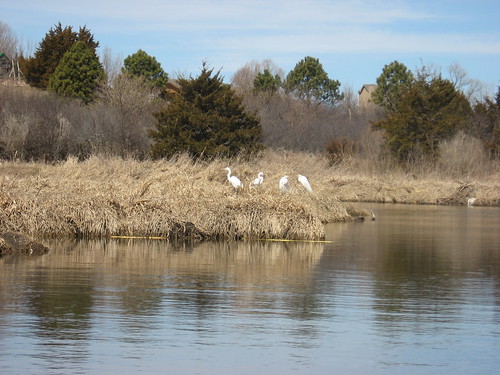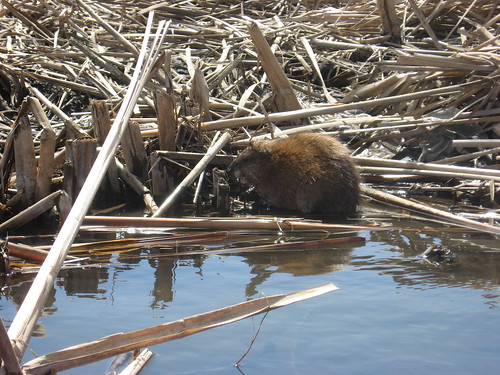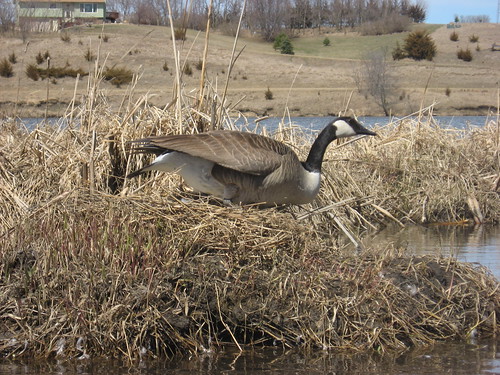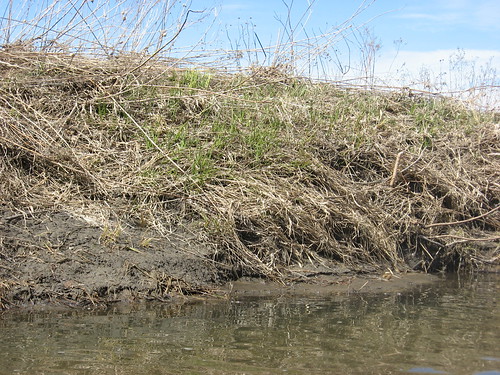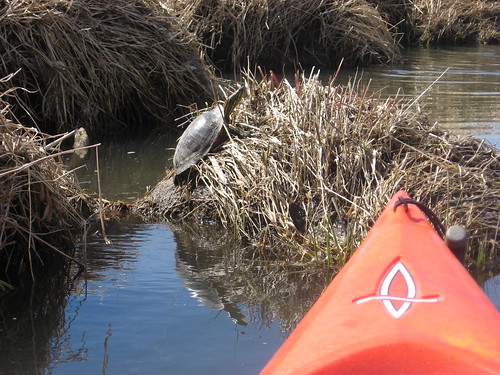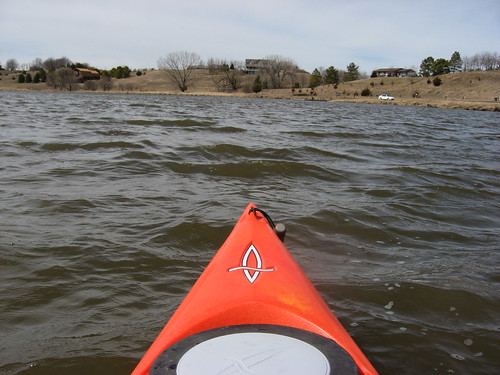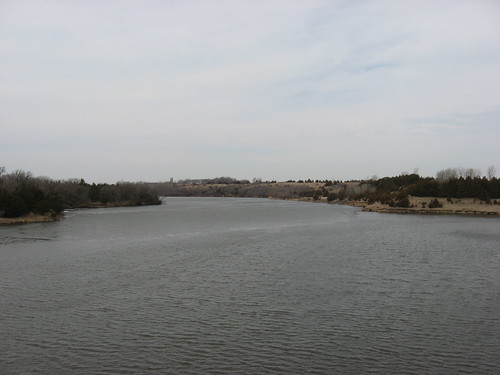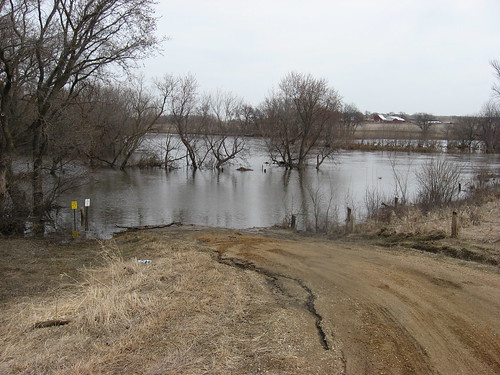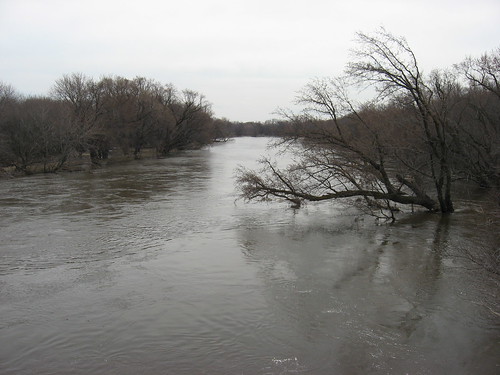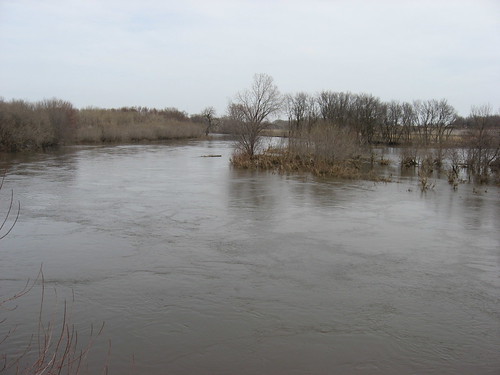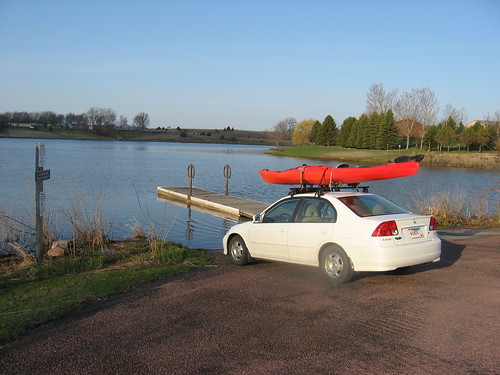
After a long set of dreary days, the forecast for today promised a brief return to spring weather: partly sunny, a temperature up to perhaps 70 degrees, winds from 10-20 mph, and NO RAIN. I got up this morning shortly after 5:00 a.m., loaded up my kayak, and set out in the dawn for my morning read, coffee, and a bagel at my habitual breakfast spot before heading west to Lake Vermillion.
As the highway was full of people commuting to their jobs, I headed west out of town along Interstate 90 to the turnoff to the Lake Vermillion State Recreation Area. I turned south at the Montrose exit; there is a sculpture garden on the south side of this exit featuring large metal sculpture works visible from the Interstate, a Hittite-like bull with curved horns prominent among them.

The Recreation Area was deserted as I arrived, as is nearly always the case on these early (7:45 a.m.) morning mid-week cruises. The temperature was in the 30s, and I had to wear a jacket and gloves. My pfd functioned sort of like a vest to keep me warm. I had decided to cruise down the west arm of the lake to the feeder creek coming out of the northwest wetlands.
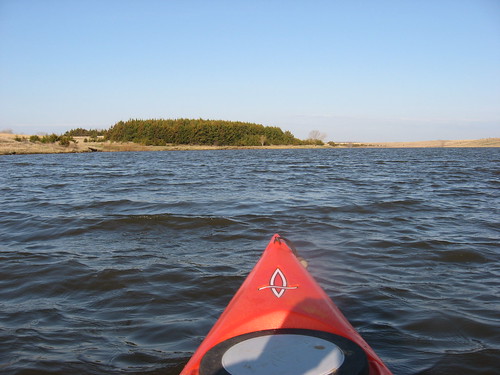
I headed into choppy waters on the way down the western arm to the northern feeder creek. Toward the end of the western arm, I came across a flock of about eight pelicans. This is the end of the lake that is surrounded by deep reeds, some elevation along the banks, and lots of vegetation. There are a couple of feeder creeks that lead back into the wetlands.

Once into the creek, the higher banks tended to provide a lee to the winds. I saw lots of nesting ducks of several varieties. The feeder creek started out at about 25 feet in width and progressively narrowed down as I continued north. The depth ranged from five to about three feet.
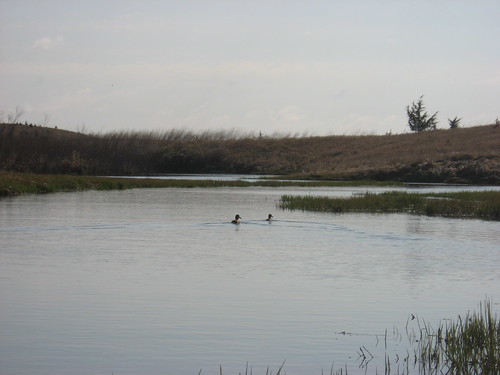
I continued north, much as I have done before, until reaching a set of rocky rapids that did not permit further passage. By this point, the creek was much narrower than my kayak, and the biggest challenge was finding a spot wide enough to turn around.
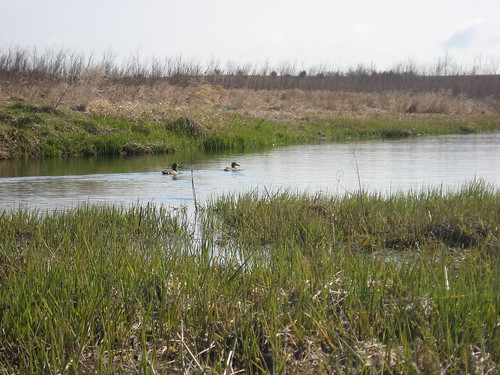
Coming back down the creek was especially tranquil. The wind was blowing softly through the bare trees and brush and the sound of birds was constant. The trees had perching birds, such as redwing blackbirds, there were many ducks that darted about, pelicans overhead, and seagulls. I just used my rudder to steer and floated quietly along the waterway observing the spring bird life and the changing landscape. Winter brown is being replaced by budding bushes and green grass.
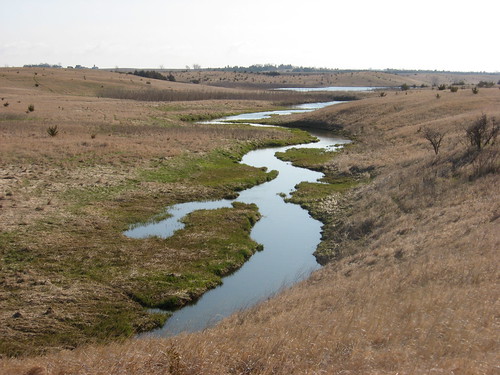
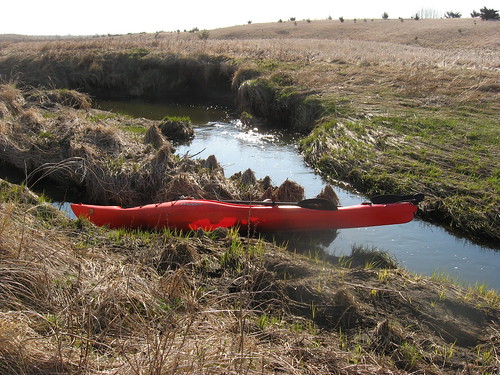
On this trip, I got out of the kayak and traveled along a deer trail through the high brown grass to an elevation offering a view of the course of the creek. This was the first time that I have done this. I’m afraid that a little later in the season would have left me with a full compliment of ticks to deal with. I remember bringing my Folbot to the shore on the Vermillion River that feeds into Lake Vermillion on the northeaster end and finding a dozen or so ticks on the fabric of the boat. I try to avoid ticks as best as I can.
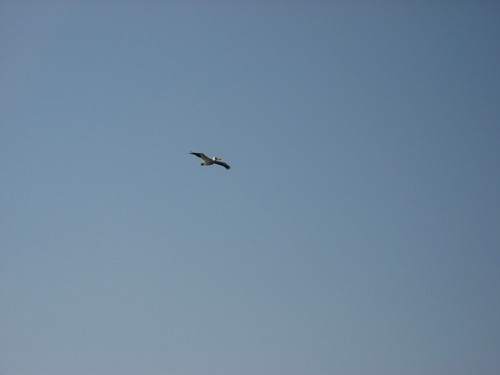
Coming back to the launch area, I rode along with wind-driven waves that were perhaps six to eight inches in height. I passed the pelicans again. Arriving at the dock, I was still the only person in the area. It was a pleasant beginning to the day, and I really like these morning cruises.
